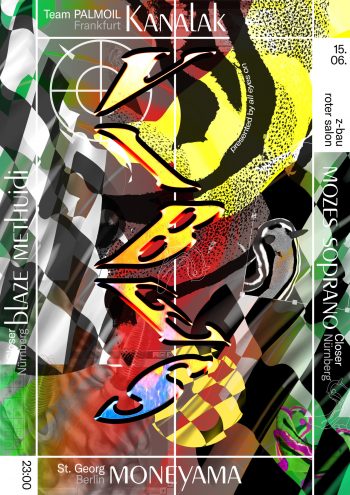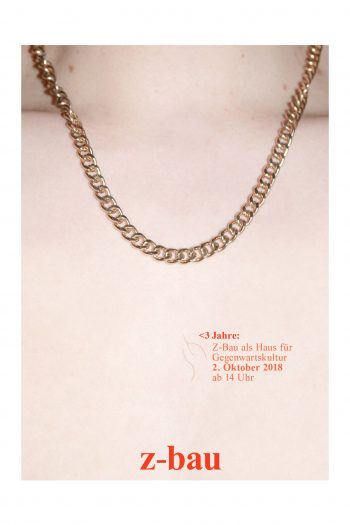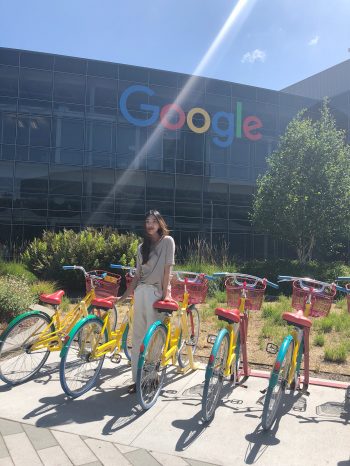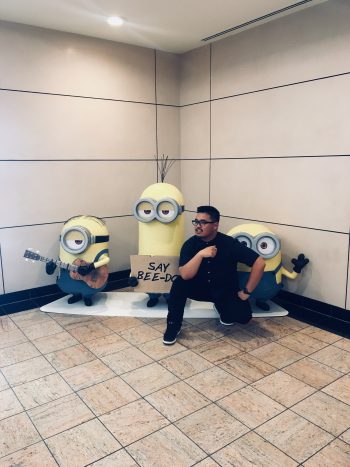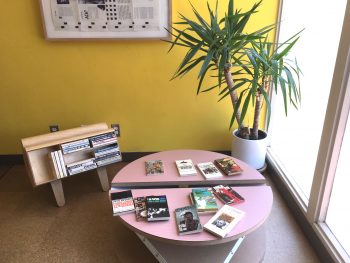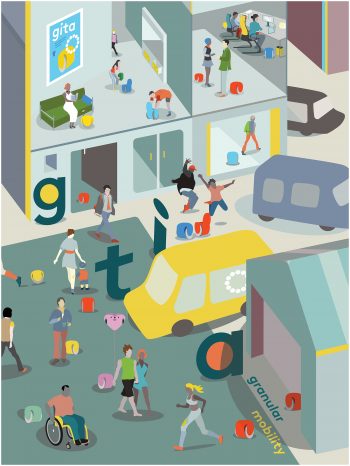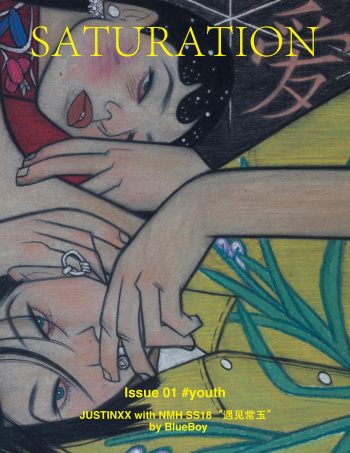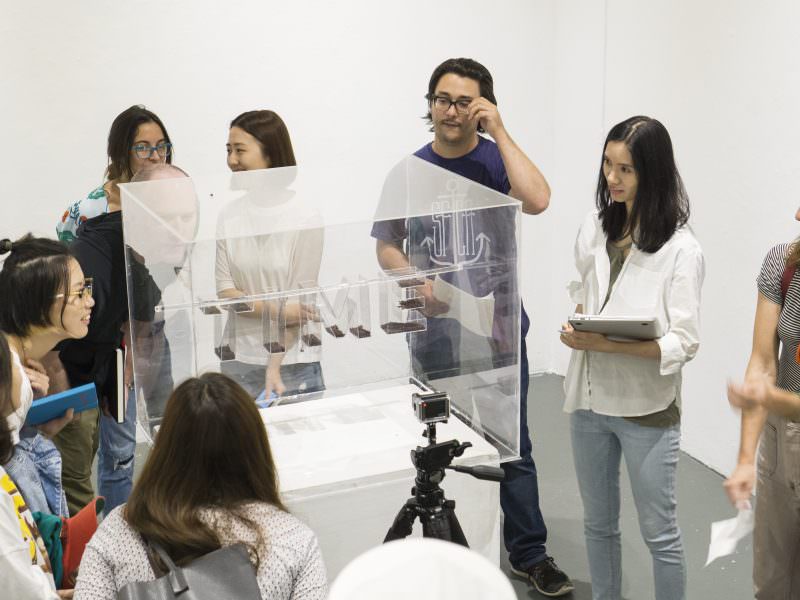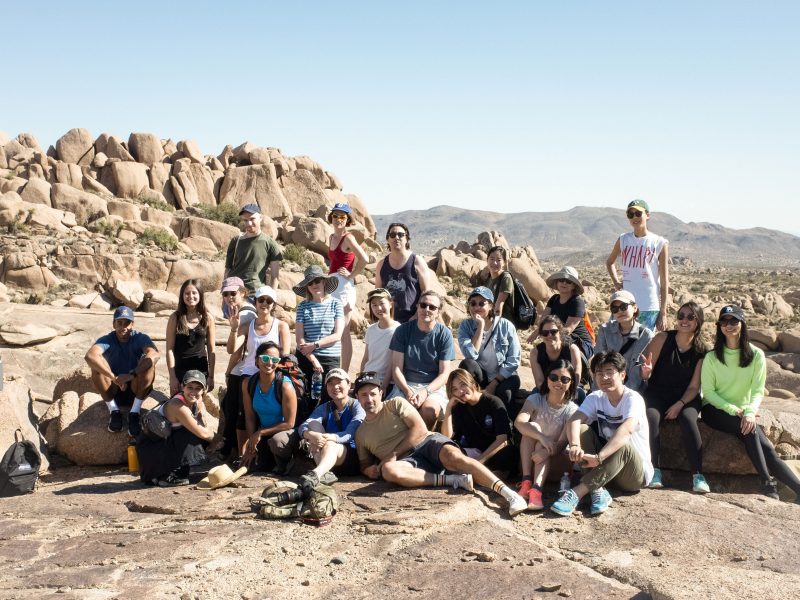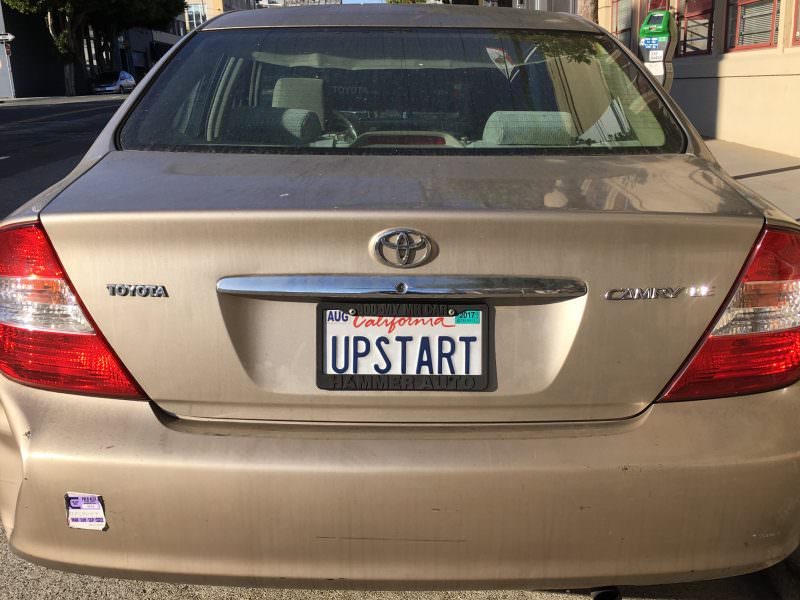Check out where CalArts design BFAs and MFAs worked in the summer of 2018 whether internationally, across the country, or right here on campus.
David Weiss (BFA 3) spent the summer at Unfun, a design studio in Nuremberg, Germany. He worked with the artist-collective Live From Earth on posters and artwork, and with a few Berlin and local clubs. Weiss said that Unfun’s studio structure made it a great place to intern.
“[I saw] how a professional and successful studio environment can work in a casual, almost nonhierarchical nature,” Weiss said. “Seeing how it was possible inspired me and gave me confidence in what I would want my future practice to look like.”
Weiss got the position after a visit to their office to discuss possible opportunities, and everything fell into place after that.
“I actually just walked in to their studio one day with my portfolio,” Weiss said. “They’re a small, casual studio and friendly people so it wasn’t a problem, and they kindly looked at my work and we talked about options. One month later I emailed them saying I’ll be back in town soon, and luckily when I arrived they gave me a desk and I started right that day.”
Minjoo Cho (MFA 2) spent the summer as a user experience designer on the Google Hardware UX team in Mountain View. She created a new UX and visual concept including high fidelity design for a future device that Google is developing. Cho said Google is known for their good work environment and that her coworkers inspired her own contributions.
“The thing that excited me the most was that I got to experience Google’s culture,” Cho said. “Googlers are never stopping to share their idea and they are always willing to help each other through the conversation even while they are having lunch. I felt like everyone was very self-motivated. Being in this amazing working environment, I naturally tried my best to be a smart member who can bring out some novel ideas.”
Cho said her project and team taught her a lot and gave her the chance to have exciting conversations about design and its future.
“I really enjoyed my intern project and the people I worked with,” Cho said. “I learned so much about the design field of UX and how to collaborate with the experts in different fields, such as UX researchers, engineers, and interaction designers. As a privilege of working for the future hardware UX team, I was super lucky to participate in lots of discussions about the future [of] design and share thoughts with amazing Googlers.”
Alex Cheng (BFA 4) interned at with Disney Consumer Products, Entertainment, and Parks, a division inside Disney that dealt with toys, consumables, furniture, fashion and things purchasable at the enterprise level or at the individual level.
“Through the internship, I learned how to work in a business environment, attend meetings, and network with people,” Cheng said. “I also learned how the creative process works in a large scale design studio.”
Cheng initially applied as a UX design intern before Disney recommended him for the consumer products division, after which he was interviewed and hired in two days. Cheng said the work environment was the best part.
“I found that through the internship, the most exciting aspect was that the campus was really spacious and low pressure,” Cheng said. “It was great walking around the courtyard and through the modernist architecture of Disney Toon Studios.”
Gian Montes (BFA 3) also got to have a studio experience working for NBCUniversal at Universal Studios, and visits were one of the perks of the job.
“I got to go to the park pretty much anytime I wanted and walk on sets from movies and TV shows, as well as being able to meet celebrities like Terry Crews and The Rock,” Montes said.
Montes worked on several shows including America’s Got Talent, This Is Us, Brooklyn Nine-Nine, World of Dance, Trial and Error, and The Good Place. He also did social design for The Purge and BlacKkKlansman. The experience in a large studio gave Montes a new perspective on design decision-making.
“Something that really surprised me was the amount of people it takes to make one decision,” Montes said. “I had made some marketing collateral for This Is Us and it had to go through three different people. Everyone liked it until the last person (a producer) preferred a different direction.”
Ella Gold (MFA 2) was a publication design intern at IN-FO.CO and Inventory Press. Her time there included working on the Saul Fletcher monograph co-published with Anton Kern Gallery, the catalogue for the Endless Shout exhibition at the ICA Philadelphia, and planning the weekend-long David Reinfurt lecture series in advance of his forthcoming book from Inventory Press. Gold said the small studio environment gave her much practical knowledge.
“I learned so much from Adam Michaels, Shannon Harvey, and the rest of the team, and I was also able to experience first-hand what it’s like to run a small albeit fast-paced design studio while simultaneously managing an imprint,” Gold said. “It really was an honor to work with them and a really fun experience.”
Gold also cited a serendipitous shared enthusiasm that helped shape her upcoming MFA project.
“Last year I developed an interest in Marshall McLuhan and other Electric Information Age paperbacks, and I only realized when I started working with them that Adam not only has a similar interest, but also wrote a book about them!” Gold said. “In this way, my summer working with IN-FO.CO not only taught me a lot about typography, but also allowed me to delve deeper into my cultural interests, which eventually led to the development of my MFA2 project.”
Xiyu Deng (MFA 1) worked in Boston at the robotic startup company Piaggio Fast Forward building visuals for a robot that will be launched to market early next year. Deng worked in several design mediums including app design, web, editorial, illustration, and poster design. She said that designing in a work environment came with new limitations that she had to manage.
“During my PMFA year at CalArts, we made whatever visuals we liked with no restriction, as long as the form communicated the concept behind it,” Deng said. “However, working in the real industry, I got many restrictions and had to generate new designs based on the visuals that already existed. For me, this was the most interesting, but also challenging, part of my internship.”
She also got the chance to explore more digital design and worked with her team to help expand her skill set.
“My internship pushed me to learn digital design which I barely got chance to learn during my PMFA year,” Deng said. “I feel lucky to have a director who taught me step-by-step and encouraged me to step outside my comfort zone. With his help, I overcame my fear of illustrating and feel more confident about my designs.”
As for self initiated projects, Shibo Chen (MFA 2) started Saturation Magazine, a fashion and art publication. Chen said the concept revolved around inviting talented emerging artists to collaborate, and the idea was born out of personal passions and after a kickstart in a CalArts class.
“For a while I was thinking about starting a magazine that is about the things that I’m interested in, like fashion illustration, collage, etcetera,” Chen said. “And I had the publication class last semester, so I think that was a good chance to actually start the magazine and then I spent all summer working on that.”
Chen said that the project involved a wide range of work including designing the magazine, collecting content, connecting with artists, making illustrations and collages, creating promotional videos, and making the website.
Back at CalArts, Sam Jones (MFA 1.5), Vivian Naranjo (MFA 2), and Tracy Tran (MFA 2) worked on the poster archive with faculty member Michael Worthington. Jones said he relished the chance to contribute to documenting CalArts, and design, history.
“It was a great opportunity to work with Michael and fellow grad students, Vivian and Tracy, on a project that we believe is vitally important to CalArts,” Jones said. “It not only records the history of posters from the graphic design department, but it shows the change in styles over the decades and what was relevant during those periods of time from the 1970s to present day.”
Jones said he was taken aback by the sheer volume of posters that required cataloguing, but hoped that our future artificial intelligence replacements would appreciate his work.
“What surprised me was how many thousands of posters there were to be archived!” Jones said. “It was a lot of organizing, photographing, and photo editing, and there is still much more work to be done, but this incredible work will eventually be something that can be enjoyed by all future students at CalArts—and all the AI!”
